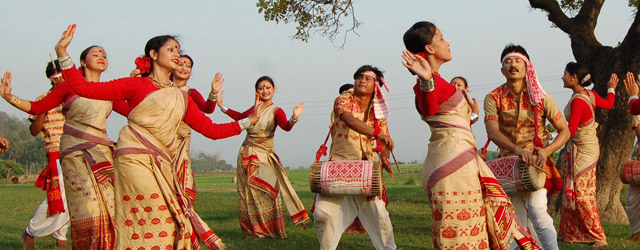Kongali Bihu or Kati Bihu as it is commonly known derives its name from the month of Kartik which is traditionally known as Kati. Unlike Bohag Bihu, Kati Bihu is not a flamboyant festival and the festivities are more sombre in nature. This Bihu is celebrated during the time of relocation of the rice sapling during the month of October. The granaries of the farmers usually remain empty during this time, hence it is known as Kongali (poor) Bihu.
The main part of this Bihu celebration involves lightening of lamps or saaki (candles) in different parts of the household or paddy field. The main lamp is lit in the courtyard near the Tulsi plant. The Tulsi plant holds a special significance for Hindu people as it is considered to be very auspicious in Hindu religion. Besides being very auspicious, the plant is known to possess various medicinal properties that can cure a person of various ailments.
On the occasion of Kati Bihu, the plant is thoroughly cleaned and is placed on a ‘Tulsi Bheti’. A lamp is lit in front of the plant and various Prasad and prayers are offered to Goddess Tulsi for the wellbeing of the family and for a good harvest. The Prasad is later on shared among various members of the household.
In the paddy field, farmers lit up a special kind of lamp, known as ‘Akash Bati’ or sky lamp. These lamps are placed high on a bamboo pole or bamboo tree. It is believed these lamps are lit to show our ancestors the way to heaven. Scientifically speaking, these lamps help to attract the various insects or pests in the field. They get drawn to the fire and die, which helps to keep the crops healthy.









